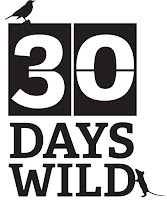To start with, my records were not included with the BioBlitz totals. This was because I hadn't set up the Garden BioBlitz 2016 activity in iRecord. The kind person running the GardenBioBlitz Twitter account untangled my error and my results appeared with the rest. This is how the national summary looked when I finished putting in my results on June the 10th.
 |
| National Results on June the 10th - 152 species for East Sussex. |
 |
| Breakdown of my 144 Species. |
Moths and Birds - Must Try Harder!
Compared to the National breakdown, my bird and moth counts are low. My bird list seemed reasonable for our garden but I can probably do better. However I haven't been paying attention to moths, so maybe that's something to look at over the coming year.
 |
| Diamondback moth (Plutella xylostella) |
Since the beginning of June, the @MigrantMothUK Twitter account has been retweeting reports of thousands being found all over the country. They suggest that they may have been come from Scandinavia. Maybe they were carried on the cold North winds we experienced at the end of May. This is bad news for vegetable growers as their caterpillars eat brassicas (cabbage family).
While I am talking about moths, I must mention the Moths UK & Europe Facebook group who have kindly helped to identify a small, brown but intricately patterned Common Marble (Celypha lacunana) moth.
 |
| Common Marble (Celypha lacunana) |
My pie chart shows that I am doing quite well in terms of numbers for Bees, Wasps, Ants and Sawflies and I am gaining a better understanding of the differences between the main groups. Every now and again I make really idiotic errors but I am quite pleased with my progress. This is really down to the kindness and patience of the iRecord verifiers and members of the UK Bees, Wasps and Ants Facebook group who have been patiently verifying my results and tactfully correcting my errors.
 |
| Small Garden Bumblebee on foxglove (sorry - a bit blurred). |
It's called "buzz foraging" in flowers with abundant pollen like this poppy the bee vibrates its wing muscles without moving the wings, this creates an intense vibration, the pollen flies off the flower onto the bee which then grooms it off and onto the pollen basket.
Matt Smith then confirmed that they also did it in Foxgloves.
I am beginning to get my head round the main groups of solitary bees, thanks to Ryan Clark's Guide to Solitary Bees in Britain.
If you are scared of spiders, look away now!
Another fascinating if rather gross insight came from the British Spider Identification Facebook group (I think). Unfortunately, I can't find the post now but it showed a black Spider Eating (Auplopus) wasp removing the legs from a Sac Spider (Clubiona). Once this is done, the wasp would fly off, carrying the spider to feed its young. I found both in my BioBlitz and am pleased to find out how they fit into the garden food web.
 |
| Predator - Spider Eating Wasp (Auplopus) |
 |
| Prey - Sac Spider (Clubiona) |
I found more species (144) this year than last (129). There was a fair amount of 'churn'. I 'lost' 26 species but gained 35:
- I lost some birds, which regularly visit the garden, by missing the 'early shift'.
- I lost some flowering plants - due to our own tidying and browsing by a Fallow buck. I am quite indignant that the deer, having eaten some of my total, didn't do the decent thing and turn up on BioBlitz day.
- A notable absence was spangle galls on the oak - last year there were thousands.
- We've lost the liverwort from a damp area.
 |
| Green Shield Bugs. |
Looking forward
Things will consider focussing on next year include:
- A better organised set up - due to being in Birmingham the previous week, I didn't prepare very well.
- More Moths - maybe I'll try a simple trap to catch some night flyers.
- More ground level creatures - I had some success with my beetle traps especially those by the wall, so I will try these again next year.
- An early shift to catch our garden birds.
- Maybe moss and lichen.


No comments:
Post a Comment